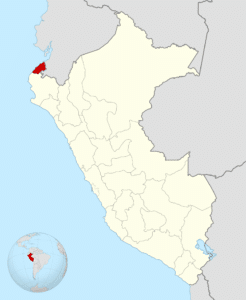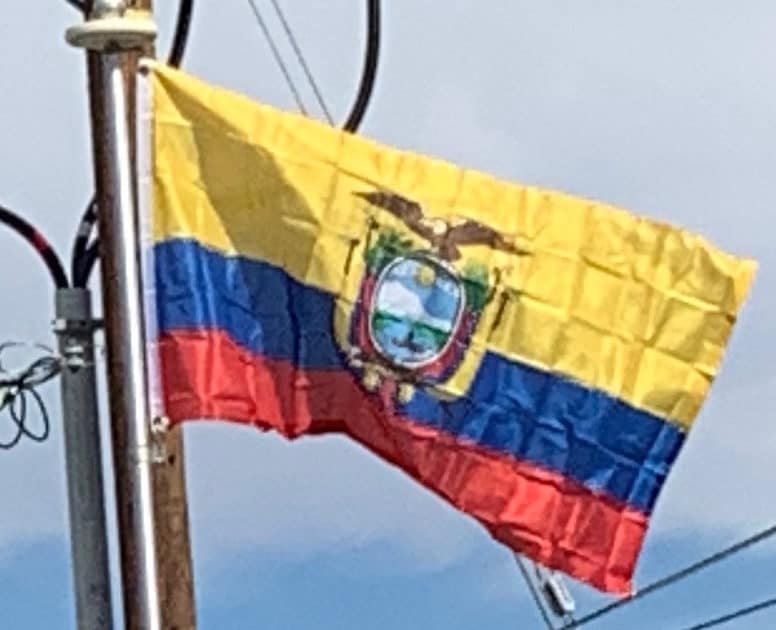However, Bolívar’s intention was to form a new republic known as the Gran Colombia, out of the liberated Spanish territory of New Granada which consisted of Colombia, Venezuela, and Ecuador. San Martin’s plans were thwarted when Bolívar, with the help of Marshal Antonio José de Sucre and the Gran Colombian liberation force, descended from the Andes mountains and occupied Guayaquil; they also annexed the newly liberated Audiencia de Quito to the Republic of Gran Colombia. This happened a few days before San Martin’s Peruvian forces could arrive and occupy Guayaquil, with the intention of annexing Guayaquil to the rest of Audiencia of Quito (Ecuador) and to the future republic of Peru. Historic documents repeatedly stated that San Martin told Bolivar he came to Guayaquil to liberate the land of the Incas from Spain. Bolivar countered by sending a message from Guayaquil welcoming San Martin and his troops to Colombian soil.
Peruvian Occupation of Jaén, Tumbes, and Guayaquil:
In the south, Ecuador had de jure claims to a small piece of land beside the Pacific Ocean known as Tumbes which lay between the Zarumilla and Tumbes rivers. In Ecuador’s southern Andes Mountain region where the Marañon cuts across, Ecuador had de jure claims to an area it called Jaén de Bracamoros. These areas were included as part of the territory of Gran Colombia by Bolivar on December 17, 1819, during the Congress of Angostura when the Republic of Gran Colombia was created. Tumbes declared itself independent from Spain on January 17, 1821, and Jaen de Bracamoros on June 17, 1821, without any outside help from revolutionary armies. However, that same year, 1821, Peruvian forces participating in the Trujillo revolution occupied both Jaen and Tumbes. Some Peruvian generals, without any legal titles backing them up and with Ecuador still federated with the Gran Colombia, had the desire to annex Ecuador to the Republic of Peru at the expense of the Gran Colombia, feeling that Ecuador was once part of the Inca Empire.

On July 28, 1821, Peruvian independence was proclaimed in Lima by the Liberator San Martin, and Tumbes and Jaen, which were included as part of the revolution of Trujillo by the Peruvian occupying force, had the whole region swear allegiance to the new Peruvian flag and incorporated itself into Peru, even though Peru was not completely liberated from Spain. After Peru was completely liberated from Spain by the patriot armies led by Bolivar and Antonio Jose de Sucre at the Battle of Ayacucho dated December 9, 1824, there was a strong desire by some Peruvians to resurrect the Inca Empire and to include Bolivia and Ecuador. One of these Peruvian Generals was the Ecuadorian-born José de La Mar, who became one of Peru’s presidents after Bolivar resigned as dictator of Peru and returned to Colombia. Gran Colombia had always protested Peru for the return of Jaen and Tumbes for almost a decade, then finally Bolivar after long and futile discussion over the return of Jaen, Tumbes, and part of Mainas, declared war. President and General José de La Mar, who was born in Ecuador, believing his opportunity had come to annex the District of Ecuador to Peru, personally, with a Peruvian force, invaded and occupied Guayaquil and a few cities in the Loja region of southern Ecuador on November 28, 1828.
